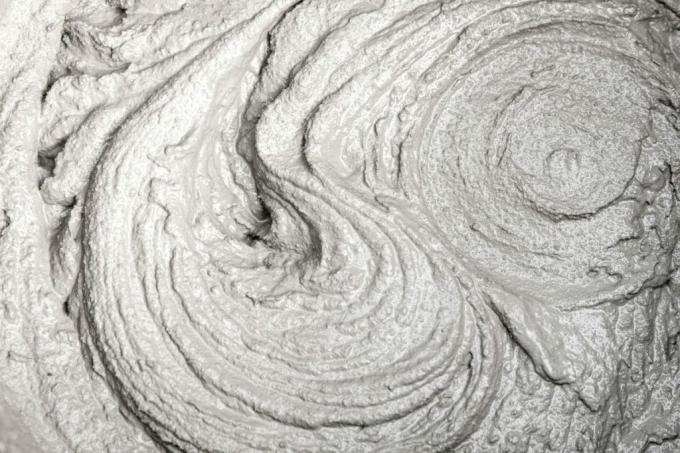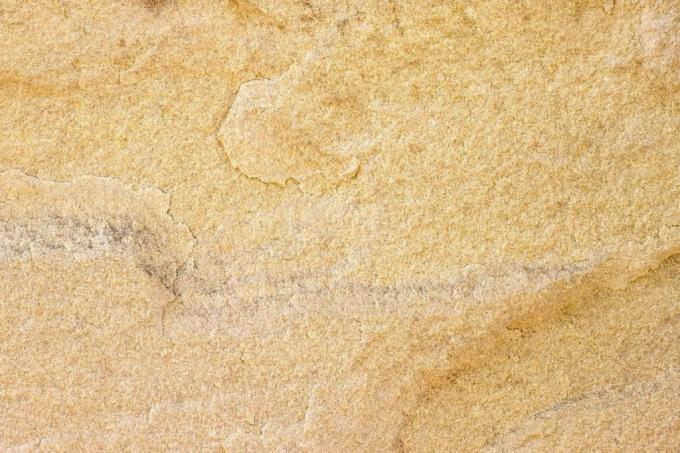
table of contents
- Trass mortar for grouting?
- Properties of the sandstone
- Use soft grout
- frequently asked Questions
Sandstone is a popular building materialwhich was already used by the ancient Romans. It is easy to work with. However, not every mortar can be used to grout sandstone walls.
In a nutshell
- Sandstone has been used as a building material for centuries
- very soft rock and easy to work with
- Sandstone consists of 50 percent sand
- Due to its properties, special mortar is necessary for grouting
Trass mortar for grouting?
Many mighty structures were built from sandstone, such as the Brandenburg Gate. Trass was and is very often used when building with natural stones. It is a type of natural pozzolan, consisting mainly of silicon and aluminum compounds. In addition to water, binders such as lime or cement are added to this. In general, trass mortar produced in this way can be used for grouting natural stones, but not for sandstone
- Trass mortar absorbs moisture, i.e. water
- this can easily penetrate the sandstones
- the stones then weather faster
In order to grout a sandstone wall, the choice of mortar is therefore particularly important. It must correspond to the properties and characteristics of the rock.
Tip: The joint filling should always be at least 2 mm below the stone surface.

Properties of the sandstone
Sandstone is a sedimentary rock with a visible layer structure. In other words, the rock is ground very finely over time and usually deposited on the bottom of water. Water and other sediments act on the existing sand deposits. This is then pressed and at the end the sandstone is created and can be mined. Typical features of the sandstone are:
- usually soft, loose material
- sometimes also massive and firm
- Consists of at least 50 percent sand
- mainly quartz sand
- further mixed parts contained: ore-containing minerals, calcite, mica minerals
- The binders in sandstone are calcite, pebbles, clay and lime
- partial inclusion of fossils such as vertebrates or parts of plants
- Density of the sandstone between 2.6 and 2.72 g / cm³
- Grain size of the batch parts between 0.06 and 2 mm
The color of the sandstone depends on mineral admixtures:
- yellowish brown: high limonite content
- green: contains glauconite
- Red; high proportion of carbon and iron oxide
- black-blue: high bitumen content

Note: Over time, the sandstone will weather. Light stones acquire a dark color due to the oxidation of the existing manganese and iron minerals such as pyrite, goethite and hematite.
Use soft grout
A rule of thumb is that the grout must always be softer than the sandstone used. Furthermore, it should not have too strong connection properties. Also not to be forgotten is the size of the grain size of the grout. The following materials can be used
- NHL mortar, a natural hydraulic lime
- natural air lime mortar in different grain sizes
- alternatively HL mortar made of cement and hydrated lime, hydraulically produced binding agent
However, in this context it must also be mentioned that the air lime mortar is not as weather-resistant as the hydraulic lime mortar. You should keep this in mind when using it on heavily weathered surfaces.
The grain size of the grout is also important. It can be selected depending on the joint width. It is also decisive whether it is about the renovation of an already existing, weathered sandstone wall or whether it has just been rebuilt.
Weathered, old sandstone wall
- Mortar grain size up to 4 mm for deep grouting
- with surface grouting, size of the grain 1mm
- Joints must be thoroughly scraped out and cleaned
Newly built sandstone wall
- The grain size depends on the joint width
- should be at least 2 mm

In order for the grout to adhere well, the joints between the stones of the sandstone wall should be sprayed well with a four percent clay solution before grouting. This strengthens the subsurface and increases the adhesion of the grout. In addition, you should make sure that the consistency of the mortar is not too damp.
Tip: After grouting, you should immediately remove all mortar residues from the sandstone with a damp cloth and water.
frequently asked Questions
No, in no case simple cement mortar is suitable for the joints of sandstone. It's just too hard and doesn't allow stretching. The joints can quickly crack and burst.
No, not necessarily if it is a dry stone wall. Here the sandstones are simply tilted into one another without any binding agent. The gaps, resp. Joints are then suitable for planting afterwards. In this way a small valuable biotope can be created.
Hydraulic lime mortar is insoluble in water. No air contact is necessary for curing. It even hardens under water. Compared to hydraulic lime mortar, air lime mortar is much softer and more sensitive to pressure. In addition, it depends on the carbon dioxide in the air in order to cure properly.
